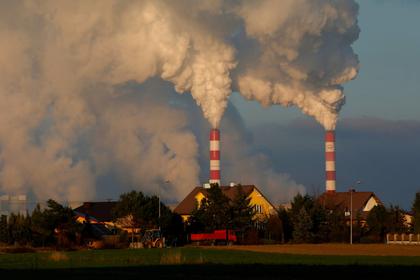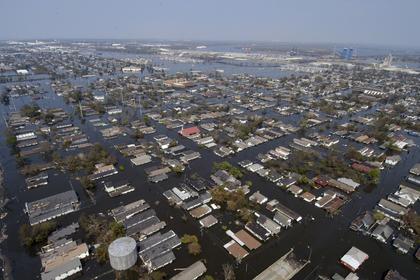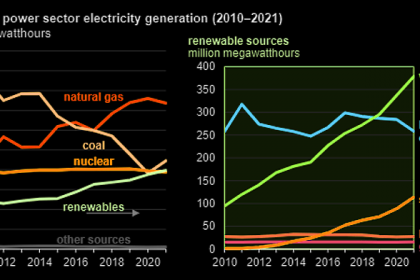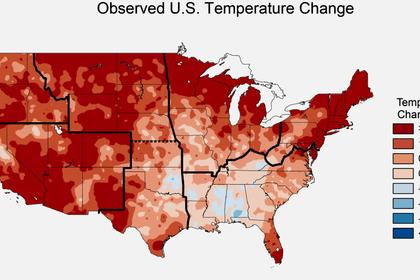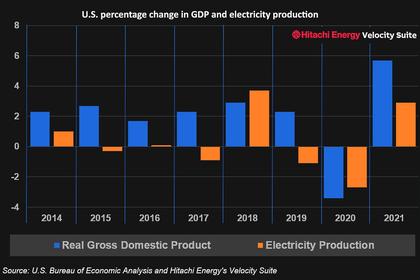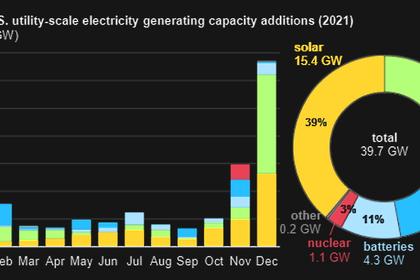
U.S. RENEWABLES RISES
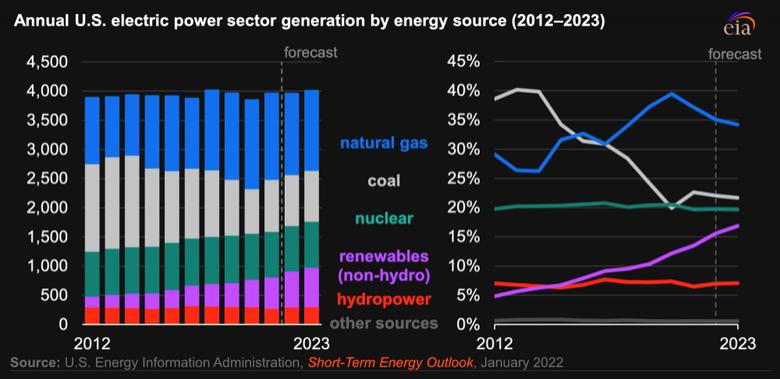
By KEN BOSSONG Executive Director SUN DAY Campaign
ENERGYCENTRAL - May 31 - According to a review by the SUN DAY Campaign of data recently released by the Federal Energy Regulatory Commission (FERC) and the U.S. Energy Information Administration (EIA), renewable energy sources (i.e., biomass, geothermal, hydropower, solar, wind) provided 97.4% of new domestic electrical generating capacity and 24.4% of actual generation during the first three months of 2022.
According to the latest issue of FERC's" Energy Infrastructure Update" (with data through March 31, 2022), utility-scale (i.e., >1-MW) solar and wind facilities added 1,639 megawatts (MW) and 4,114-MW respectively. Hydropower provided an additional 5-MW. Natural gas contributed the remaining 154-MW of the 5,912-MW in new capacity reported for the first quarter of 2022. [1]
In March alone, wind (1,418-MW) and solar (240-MW) accounted for 100% of the new capacity brought on-line for the month.
Renewables now provide more than a quarter (26.4%) of total U.S. available installed generating capacity - a share significantly greater than that of coal (18.2%) and more than three times that of nuclear power (8.2%). Only natural gas (43.9%) provides a greater share of capacity. [2]
In addition, actual electrical generation by renewable energy sources set new records for both the first quarter and just the month of March.
The latest issue of EIA's "Electric Power Monthly" report (with data through March 31, 2022) reveals that in the first three months of 2022, renewable energy sources (including small-scale solar systems) increased their electrical output by 18.3% compared to the same period a year earlier and provided 24.4% of total U.S. electrical generation. In March alone, renewables hit a record-shattering share of 27.8%.[3]
For the quarter, electrical generation by solar sources grew by 31.8% while wind increased by 22.9%. Renewables comfortably out-produced both coal and nuclear power by 16.4% and 30.3% respectively.
Notwithstanding current challenges posed by grid access and trade issues, longer-term trends suggest the continued and probably accelerating displacement of coal and nuclear power - as well as natural gas - by renewable energy sources, especially solar and wind.
FERC data indicate that the share of generating capacity from solar and wind is on track to increase significantly over the next three years (i.e., by March 2025). FERC notes that there may be as much as 183,697-MW of new solar capacity in the pipeline with 60,288-MW classified as "high probability" additions and no offsetting "retirements." The "high probability" additions alone would nearly double utility-scale solar's current installed capacity of 72,070-MW while successful completion of all projects in the pipeline would more than triple it. [4]
In addition, new wind capacity by March 2025 could total 72,341-MW with 18,339-MW being "high probability" and only 151-MW of retirements expected. Thus, installed wind capacity could grow by at least 13% and possibly by much more.
“High probability” generation capacity additions for utility-scale solar and wind combined, minus anticipated retirements, reflect a projected net increase of 78,416-MW over the next three years, or almost 2,200-MW per month. That figure does not include new distributed, small-scale solar capacity or additions by hydropower, geothermal, and biomass. By comparison, net growth for natural gas will be only 10,778-MW. Thus, solar and wind together are forecast to provide more than seven times as much new net generating capacity as natural gas by March 2025... not to mention almost 360 times as much net new capacity as nuclear power (projected to add only 218-MW). Coal is forecast to drop by 30,241-MW.
If just FERC's latest "high probability" projections materialize, by March 2025, renewable energy sources should provide nearly a third (31.31%) of the nation's total available installed generating capacity with utility-scale solar and wind accounting for 10.09% and 12.00% respectively, or close to a quarter (22.09%) combined.
-----
This thought leadership article was originally shared with Energy Central's Clean Power Community Group. The communities are a place where professionals in the power industry can share, learn and connect in a collaborative environment. Join the Clean Power Community today and learn from others who work in the industry.
-----
Earlier:
